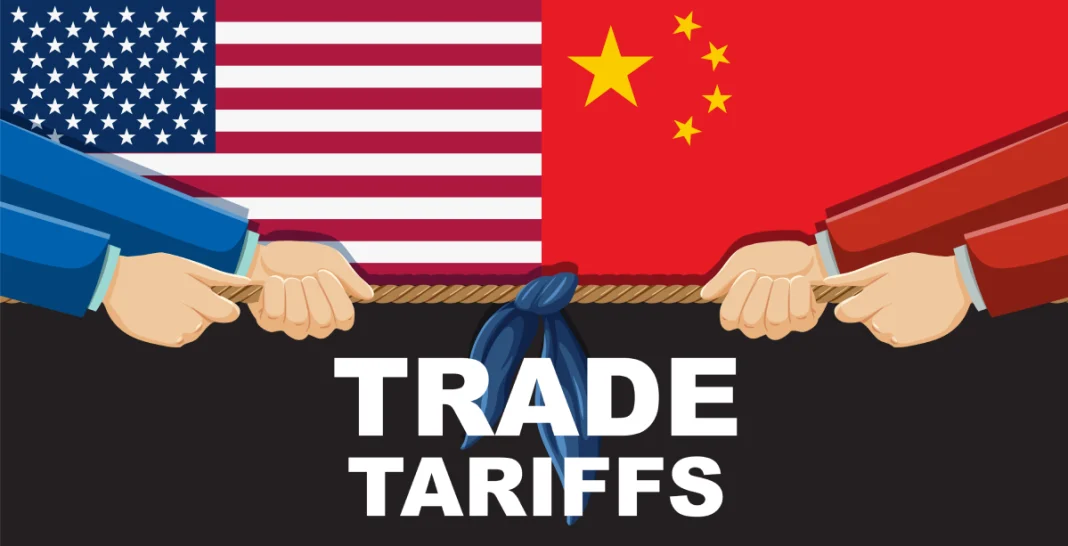The US and China are two major countries with great economic and technical positions. Both countries have stable financial situations and mostly are in the news due to this.
Both these powerhouses share a valuable bond, which is quite evident through the “ Financial Times.” In order to know the overarching guide of their trade and deals, you have to stay connected with this post.
What are both countries planning about their financial status, what are experts saying, and a lot more? To get all that you’re avoiding, stay tuned!
Also Read : What Does “Fein” Mean? How TikTok’s Latest Slang Took Over
A recap of the deal highlighted by the Financial Times
In the report, the Financial Times stated that the US and China have agreed to reduce tariffs (a type of duty or tax) on both sides for at least 90 days.
All this smart work was happening to slow down the tensions of their ongoing trade war. After a word with Geneva, the US decided to reduce its tariffs on Chinese goods up to 30%, whereas they will lower rates to 10%.
China even decided to suspend or cancel some non-tariff measures, details of which are not clear in the article by the Financial Times. This agreement showed a positive impact on global market recovery.
US market companies are performing very well, which has boosted their stock prices. Among them, those that rely on China for materials and other supplies have benefited the most.
The US dollar is more valued because people assume the Federal Reserve will not cut interest rates, as the tension of war has calmed down.
As per the deal, the US taxes on Chinese goods will be reduced by up to 40%, and Chinese taxes on US goods will be reduced by up to 25%.
Even President Donald Trump said that we hope this contract runs for a longer time, which seems to be impossible because the tariffs might get a boost again if the deal collapses.
The agreement seems to be a mutual deal from both ends to secure the economy, which people wish wouldn’t end.
What the $1.2B Agreement Means for US-China Trade
In the article, the Financial Times also highlighted that exporters in China have mixed emotions of relief and awareness due to the ongoing trade conditions.
There was a drastic fall in tariffs on Chinese goods from 145% to 30% for 90 days. The holding of tariffs has helped increase exports mainly due to the US holiday demands. However, the exporters still doubt the future.
Businesses are rushing to send their goods before the contract expires. Tariffs have been reduced slightly, but they are still much higher than they were before Trump’s presidency.
So, even though it feels like things are better, companies are still facing issues with costs and taxes.
A few companies are not ready to accept any new orders from the US. They are trying to shift their production to other nations like Cambodia and India.
The trade truce has stopped them, but this can’t resolve the bigger issues. So, exporters are tense about the upcoming scenario of trade rules as it might get changed and become worse than it is now.
What are the opinions of the Experts on this?
After the on-off tariff situations between the US and China, some experts have seen this from a different perspective, which you must explore too, for a broader spectrum of the case.
After the government announced tariff reductions, the US stock market experienced a boost
immediately. Where, The Dow Jones Industrial Average went up by 2.8%, and the S&P climbed by 3.3%.
These turned out to be one of the biggest one-day increases for the markets since April 9. The US taxes on Chinese goods dropped up to 30%, and China’s taxes on US goods dropped to 10%.
On the weekend, talks in Switzerland, Treasury Secretary Scott Bessent said that the meeting went well and this could even lead to something serious.
This was it! And the news went viral, it helped all tech and electronic stocks rise, like
- Apple increased 8.1%
- Amazon 8.6%
- Dell Technologies 7.8%.
Experts conclude that this time is best for shopping seasons, but also alert that taxes and duties are still high and can hurt the business or economy.
The US economy took smaller steps at the beginning of 2025. Still, the import problems were a serious issue for small businesses.
What This Means for Global Trade and Economic Strategy
This short-term US-China tariff truce is redefining global trade, more specifically for nations such as;
- Vietnam
- Malaysia
- Mexico
That got an advantage from companies transferring operations away from China. As China’s tariffs have now been dropped to 30% for some goods for 90 days, this will slow down the consistency of the “China-plus-one” strategy.
Countries like Vietnam and Mexico are pressured to secure stronger trade deals with the US for various reasons. Both countries saw benefits after coming on the same page.
Conclusion
The US and China have taken this matter with maturity and sensible thinking, keeping all the cons and pros in mind. They could have easily made an issue out of this, but instead, tackling the situation with dignity has raised respect for them.
Although the smaller businesses are still in trouble, as the matter is shaping, we can hope the left-out situation can also be tackled well. China-us can smoothly run their imports and exports.






